20 Ways to Lose Body Fat Really Fast From Top Nutritionist

Do you want to slim down fast? While gradual weight loss is always the most sustainable approach, if you want to jumpstart your weight loss program and lose body fat fast, there are some simple habits you should incorporate into your routine ASAP, says Jamie Maitland, Certified Holistic Nutritionist, Fitness Trainer, Founder of The Office Health and author of The 21 Day Reset Cookbook. Here are 20 ways to lose body fat really fast from a top nutritionist.
Watch Portion Sizes
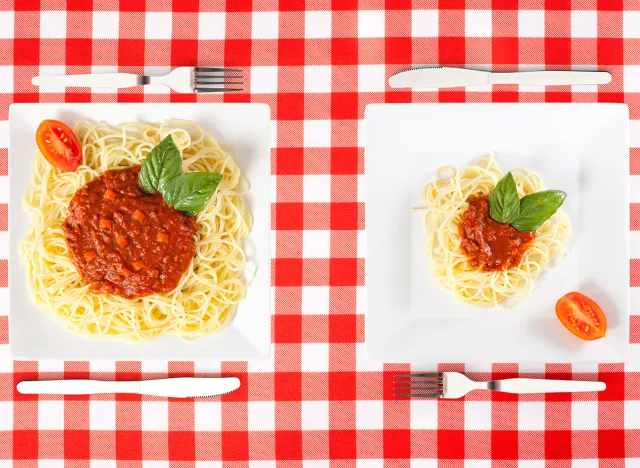
Without overthinking the "counting of macros," watch your portion intake, encourages Maitland. "Use common sense here and do your best not to have your brain on autopilot in this category," she explains. If needed, she recommends using a measuring cup.
Consider Intermittent Fasting
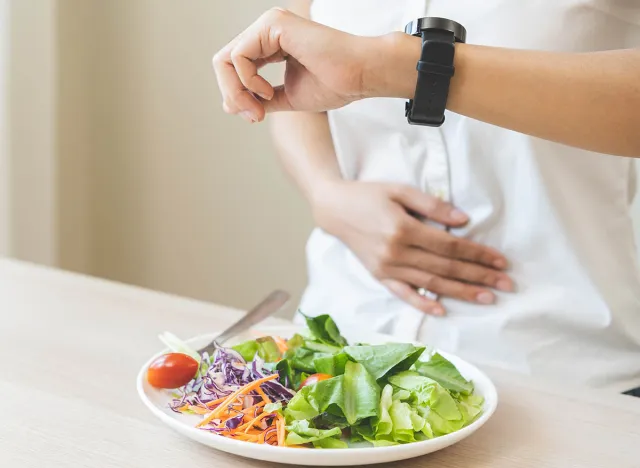
Intermittent fasting isn't for everyone, but you should consider it, Maitland says. "This can help naturally boost your metabolism and also gives your body a break from digesting." Intermittent fasting works by "prolonging the period when your body has burned through the calories consumed during your last meal and begins burning fat," adds Johns Hopkins Medicine.
Or, a 24-Hour Fast
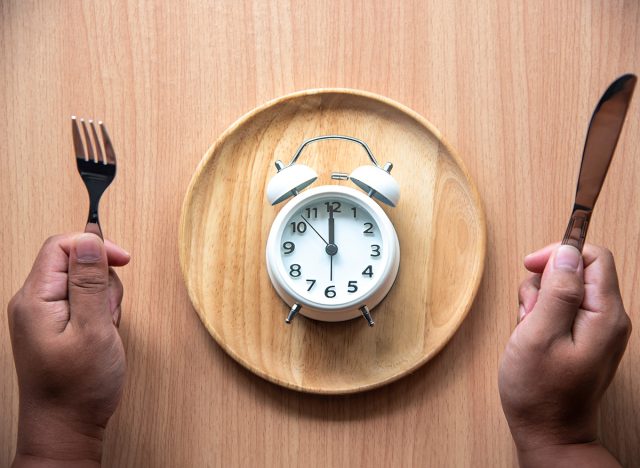
Or, you can consider a full 24-hour fast "which does absolute wonders for the body," according to Maitland. "When your body is in a fasted state you are able to tap into your fat storages more easily vs using glucose," she says.
Prioritize Protein
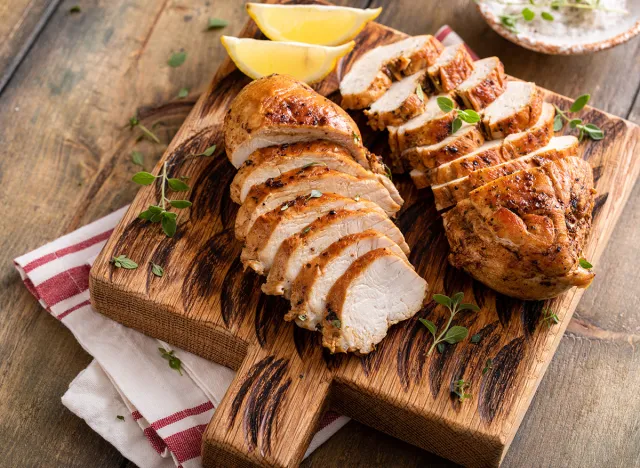
Another no-brainer per Maitland? "Prioritize protein," she says. "I know you've heard that before, but ACTUALLY DO IT and see how you feel. Consuming high amounts of protein can help reduce your hunger hormone. Our bodies also burn more calories digesting protein vs. carbs." According to clinical trials, consuming more protein than the recommended dietary allowance not only reduces body weight (BW) but also enhances body composition by decreasing fat mass while preserving fat-free mass (FFM) in both low-calorie and standard-calorie diets.
Amp Up Fiber Intake
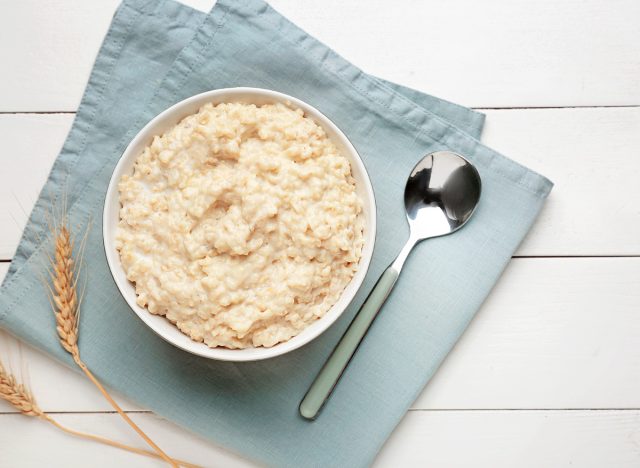
Also, amp up fiber intake, she encourages. "Eat plenty of fiber to help aid in digestion," she says. Fiber also makes you feel full faster, so you will be less likely to overindulge.
Hydration
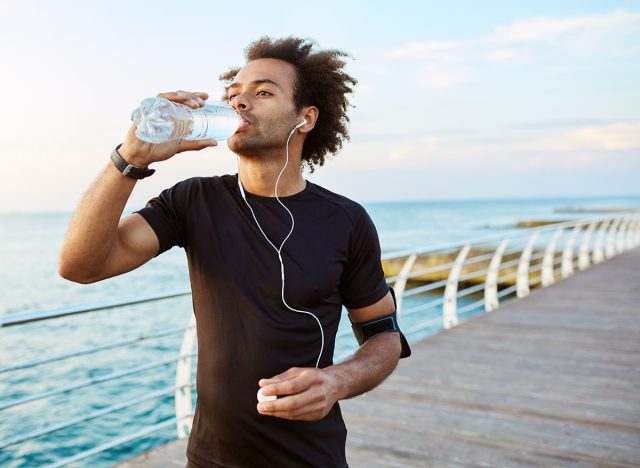
Hydration is key, says Maitland. "Drink your water!" she exclaims. "This will help move everything along within the body such as your food."
Limit Processed Foods
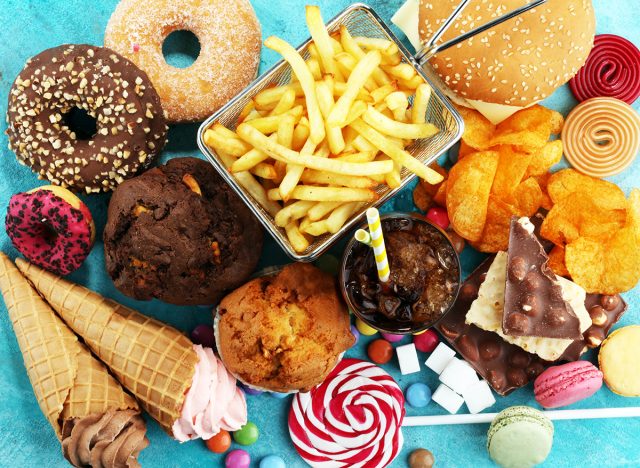
Are you eating a lot of packaged junk? This is a diet no-no, says Maitland. "Limit processed foods," she recommends.
RELATED: 15 Surprising Benefits of Ozempic, According to Science
Eat Mindfully

"Eat with your brain on," not just with your belly, says Maitland. "This is also known as eating mindfully."
Eat Healthy Fats
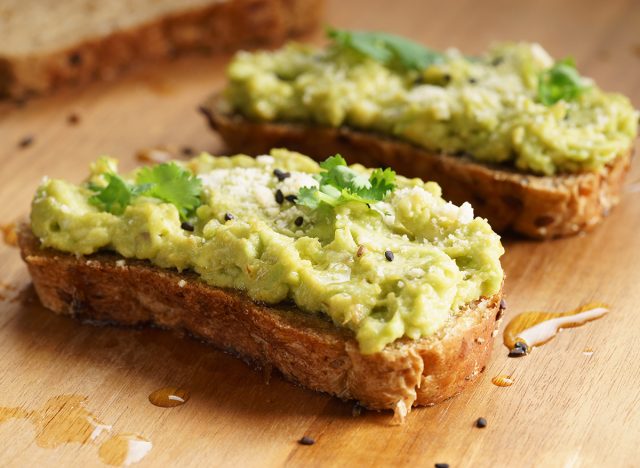
While some fats should be avoided, others are essential for weight loss. "Incorporate healthy fats such as salmon and avocado into your diet," says Maitland.
RELATED: 15 Quick Ways to Lose Body Fat Percentage in a Week
Decrease Sugar Intake
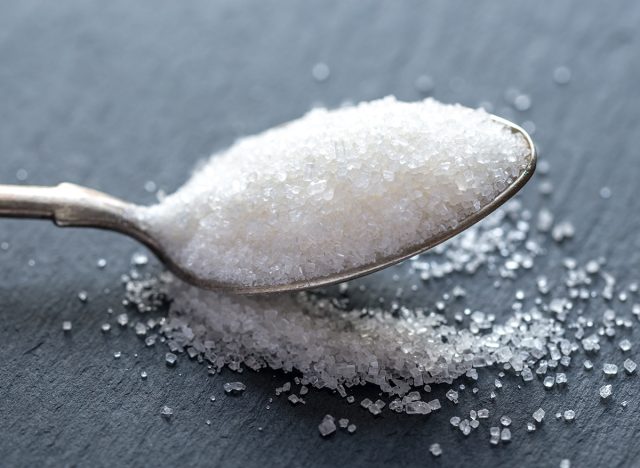
Sugar isn't going to do you any favors if you want to lose weight. "Minimize or eliminate sugar," Maitland recommends. "Try using organic allulose or monk fruit instead."
Limit Alcohol Intake

Don't drink your calories, says Maitland. "Limit your alcohol intake," she explains.
Sleep

"Get your sleep my beauty," Maitland recommends. "This helps our bodies function at an optimal level." What are the health benefits of sleep? According to the Sleep Foundation, getting enough z's is a mood booster, promotes heart health, regulates blood sugar, improves mental function, restores your immune system, helps relieve stress, and aids in weight loss.
Move More

"Move your booty," says Maitland. "This can be anything by the way—just get moving." Idea: Do 10 jump squats, 20 mountain climbers, 10 half burpees 3-4x, she recommends.
Try Meal Planning
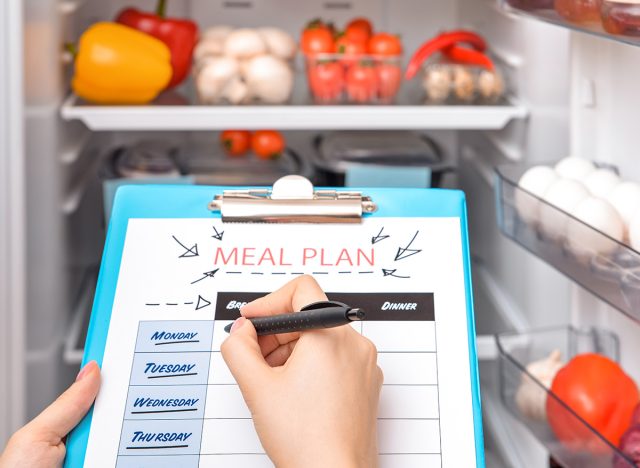
Maitland also suggests planning and organizing your meals. "This allows you to know exactly what you are putting in your body instead of relying on strangers to feed you," she says.
Make Yourself a Priority

Make yourself top priority. "Your relationship with yourself is the most important one you'll ever have," Maitland reminds.
Eat Whole Foods
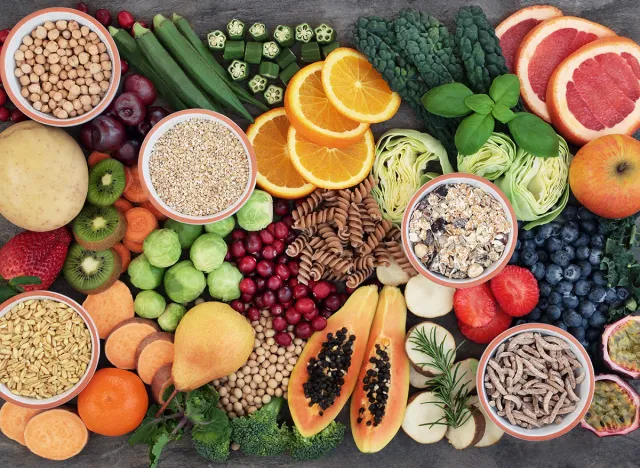
Eat whole foods, Maitland urges. "Some whole food staples I have in my fridge are cucumbers, lettuce, pistachios, avocado, and lean protein such as chicken and shrimp."
RELATED: 20 Superfoods You Should Be Eating Every Day
Self-Design Your Life

"Self-designed living," is the way to go. "Focus on designing your life yourself versus. following the crowd."
Hire a Professional

You might need help on your health journey. "Consider consulting with a Certified Holistic Nutritionist or health care professional," says Maitland.
Find Accountability Buddies

Accountability buddies will help you achieve your goals. "Surround yourself with like-minded individuals," she recommends.
RELATED: 15 Simple Tips to Fall Asleep Faster
Be Consistent

One of the most important components of weight loss is continuing to implement healthy habits into your life. "Be consistent," says Maitland.




